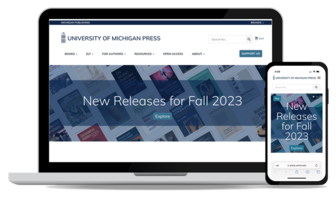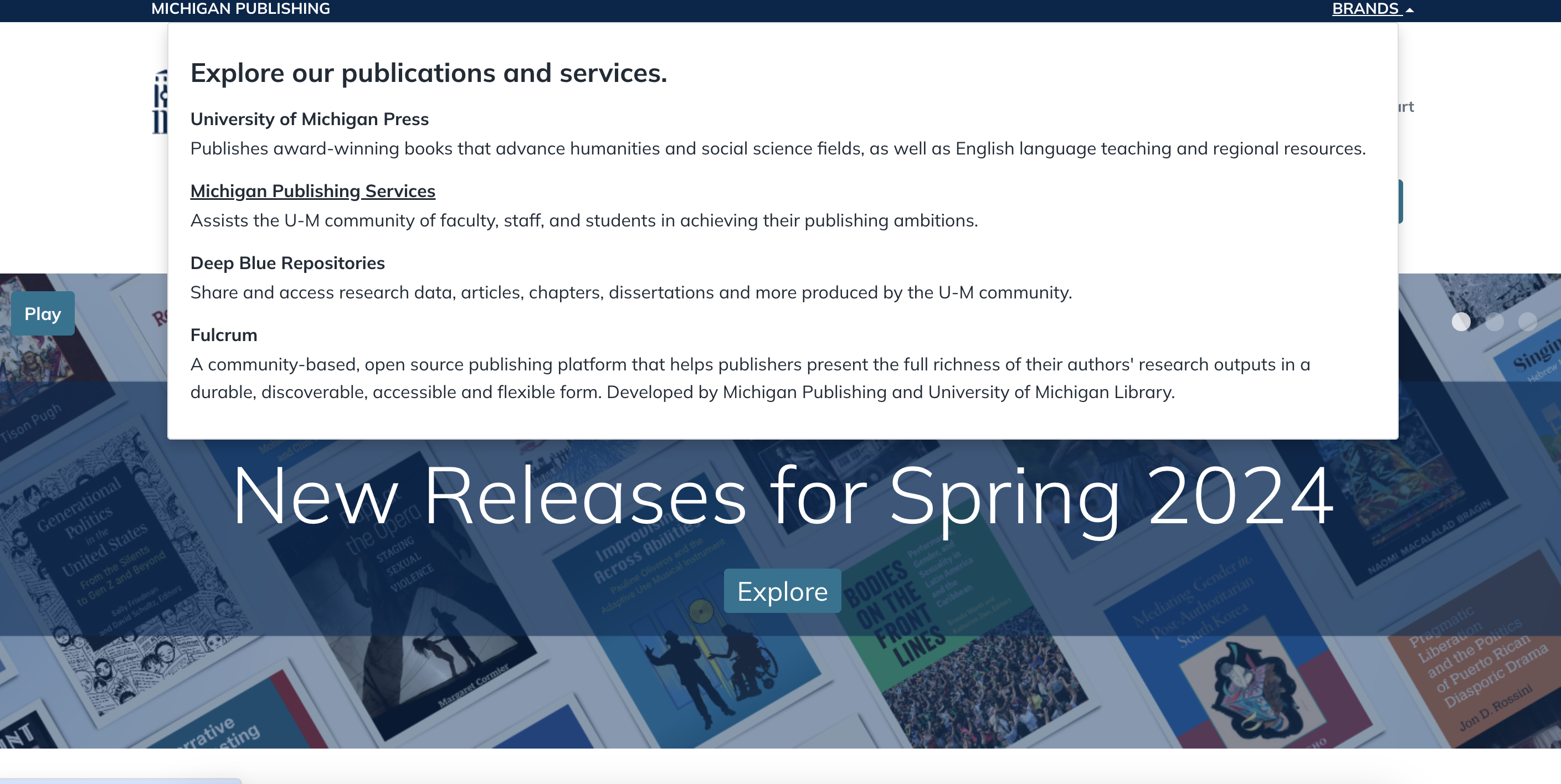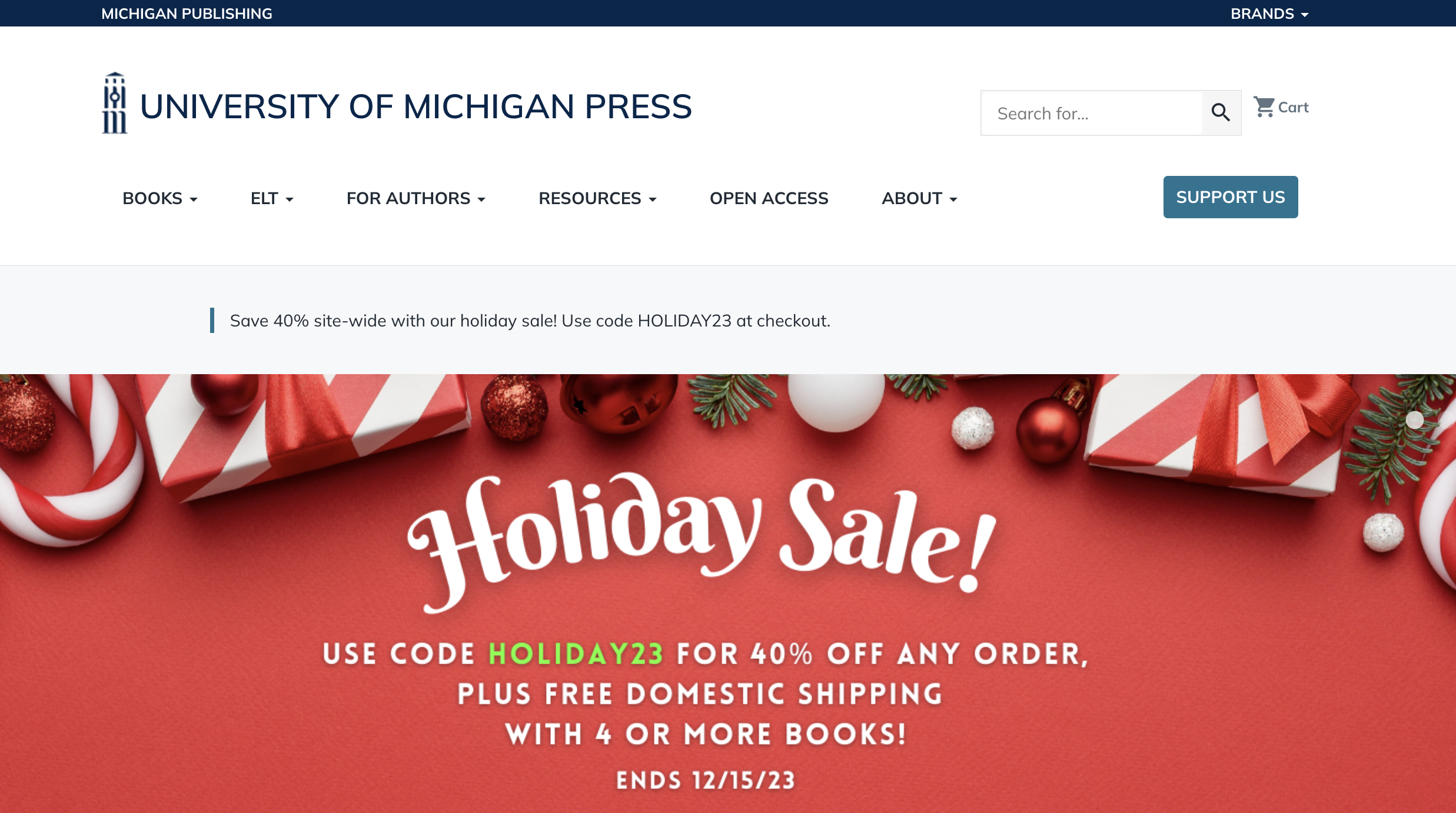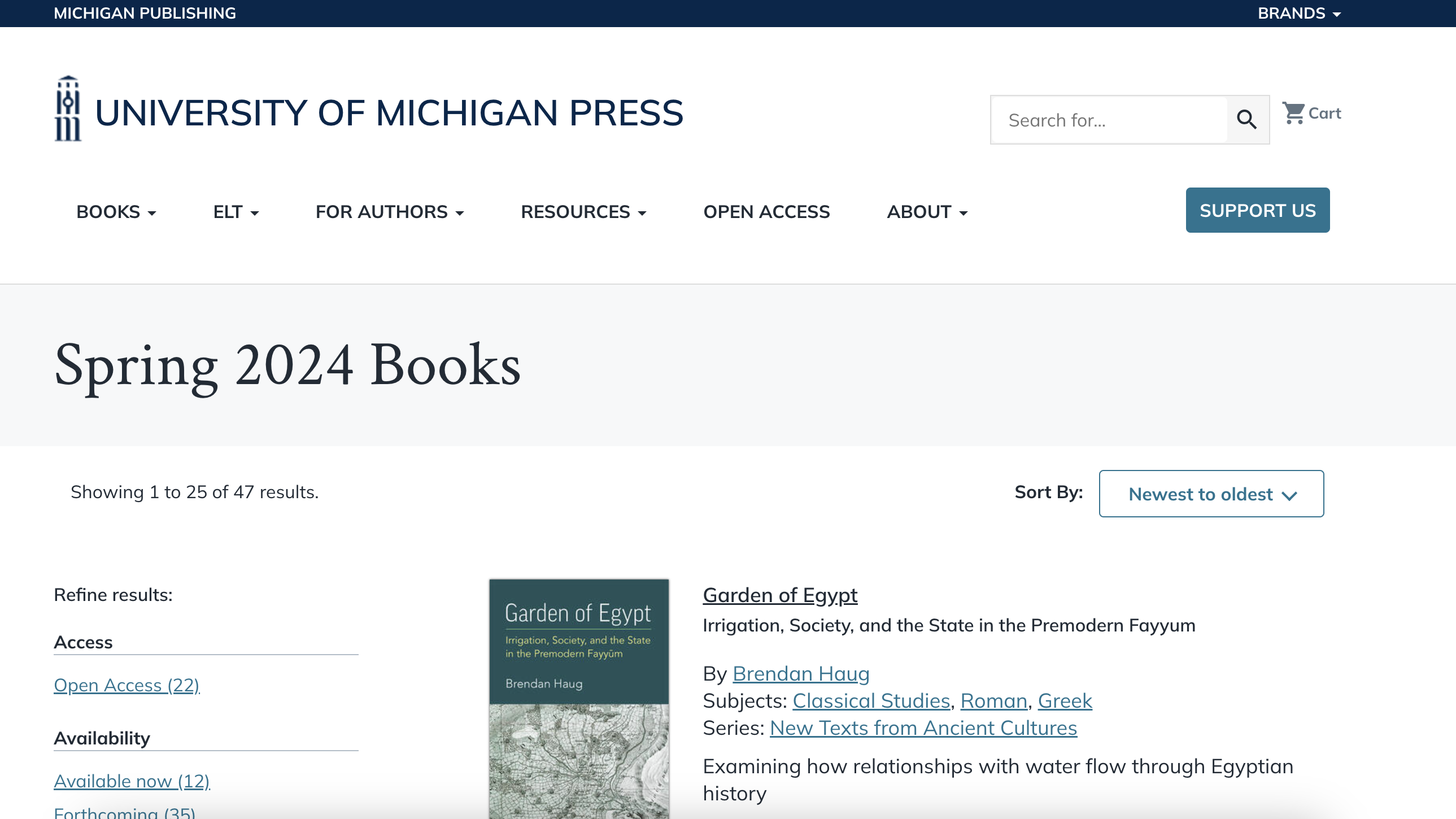
When the University of Michigan Press reached out to ReaderBound for an initial conversation about a website redesign, we were immediately impressed by their rich and wide-ranging publishing program. The press had thousands of titles alongside many additional resources, a large team including in-house developers, complex ecommerce and fulfillment needs, and a biggie: a second publishing division (Michigan Publishing Services) that would require its own site.
Thankfully, the ReaderBound platform can be custom-tailored as needed and that foundation led us to several innovative solutions for Michigan, including multiple data feeds, two sites out of one content management system, and more.
All about the data
While the University of Michigan Press website was a robust repository for the firm’s data, it wasn’t reaching its potential. The data required a lot of manipulation to make it appear as the firm wanted on its web pages. ONIX standards weren’t being met. The data may have looked okay on the firm’s website, but it wasn’t accurate or complete for retailers across the supply chain. The project began with data remediation (including the addition, setup, and debugging of an additional custom data feed to be integrated alongside the ONIX import), ONIX standards, and implementing new data flows that worked better across the board.
“Right when we started the project, our in-house title management expert left,” reports Jamie Jones, Director of Sales, Marketing and Outreach for Michigan Publishing. “ReaderBound stepped in and became that for us. We could go to Doug and Craig and say, ‘we want this metadata to appear a certain way, does ONIX support that?’ Craig was always very considerate of the user experience. He would always speak for the various possible customers of the site. And Doug was able to advise on the metadata flows. They were super helpful in filling that gap.”
Two sites, one workflow
As the data feeds began to more accurately reflect the press’ needs, the ReaderBound team turned its attention to how the data would flow across two sites: one for the University of Michigan Press, and one for Michigan Publishing Services. We settled on a flexible solution that allowed us to publish both sites from a single ReaderBound install.
Some of the results included:
• Both websites can be managed by the marketing and communications team, with flexible permissions for users to access one or both sites.
“One of the benefits to moving to ReaderBound is that anyone who's trained can update the site,” says Jamie. “The previous site was only updated by a small group of people. We avoided training new people on it because it was difficult to learn the system, with lots of steps. ReaderBound is quick and easy. Everyone on the marketing team has their own login and is responsible for certain pages. It makes us work together better.”
• The unification of design, following the brand standards and style guide from the university. The design was shared, with variations where needed.
• Overall a much more cost effective solution than building two entirely separate websites. For example, an accessibility audit was conducted for both sites at the same time, allowing for more efficiencies.
• While there are two different “shops” for the two different sites, they still use the same fulfillment and ecommerce solution.
An increase in sales
With the new site in place, the University of Michigan Press’ holiday sales almost doubled from the previous year. “I immediately equate it to the site-wide alert feature,” explains Jamie. “The holiday coupon code was on every single product page. Any way a user came into the site, they would still see the sale. This was not a feature we had on the previous site.”
An increase in possibilities
Special collections allow ReaderBound clients enormous flexibility in hand-building selections of titles and giving them proper featured landing pages with header images and descriptions, as well as embedded carousels on other pages. This is a powerful tool for marketing book sets and lists that aren’t otherwise connected via metadata—something that many publishers are not able to do. ReaderBound sites allow publishers to customize how their data appears on their own sites according to their preferences and marketing goals: resulting in special collections that drive sales.
“Something I’m really excited about is the ability to build special collections,” confirms Jamie. “Previously, we would collect lists of books by sharing URLs from search results on our site. On the new site, we can create much nicer looking versions of that with headers, text, and so on. For example, these books are not officially a ‘series’. There’s nothing in the metadata that links them. But now we have a nice way to display them, through special collections. Same for seasonal collections. We are really happy with this feature.”
The Michigan team continues to explore all the new sites have to offer, including creating more content, building out the homepage, and taking advantage of sidebar ads for special promotions. “I’m also excited about this site in terms of fundraising possibilities,” says Jamie. “ We now have a beautiful landing page that contains a narrative about supporting the press. And the blog has hugely improved—our publicity manager is thrilled with how it looks and flows.”
A truly collaborative effort
Building this powerful and flexible site solution was a true team effort. The Michigan team brought excellent expertise forward, were creative and dedicated, and worked very hard to make sure the final product would be exactly what they wanted. The ReaderBound team had the opportunity to untangle and simplify a complex situation and create a platform that can now be replicated for future clients and projects. It was a monumental effort for all that resulted in something both sides can be very proud of.
“I absolutely recommend ReaderBound,” says Jamie. “The fact that we met with them every single week for a year, and then some—they gave us so much of their time. It truly felt like they cared about our project and success. I've never worked with a vendor who was so dedicated and caring. It was a complex project for everyone, and we're all very happy with how it turned out.”


